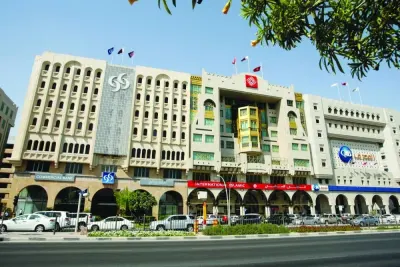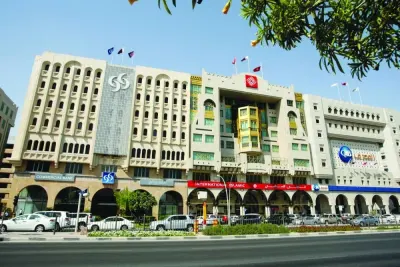Financial technology is changing Qatar’s banking landscape: OBG
Qatar is quick to embrace the financial technology (fintech) revolution, having long recognised that digital technologies can raise both competitiveness and security, Oxford Business Group said in a report.
The push to digitise has been given an added boost by the blockade, as it has driven all sectors of the economy to invest in safer and more advanced fintech systems, Oxford said in its latest ‘The Report – Qatar 2017’.
Banks have been supportive of national fintech initiatives – such as the Smart Qatar Programme, or TASMU – and have also invested heavily in the digital transformations of their own processes, from back-office services to customer interface. Up-and-coming fintech companies have seen substantial growth over this period.
A notable example is the Qatari e-payment systems provider QPAY, which reported 300% year-on-year growth from its 2014 launch to November 2017, Oxford Business Group said.
“Equally, the fintech revolution has the potential to disrupt the sector, with new digital solutions challenging conventional banking structures and ways of doing business. Adapting to and benefiting from these changes will require flexibility and a pragmatic attitude towards cooperation, not only among commercial and investment banks, but also central bankers, customers and fintech companies themselves,” Oxford Business Group said.
Digitisation, it said, offers a range of advantages for the consumer, such as faster transaction times, greater convenience and better access to services.
For banks, offering online services and digital transactions increases speed and efficiency, while also lowering operational costs. Such measures reduce the need for physical branches and allow many procedures to be simplified, if not eliminated altogether.
Many of these changes could be implemented rapidly in Qatar because there is already a high level of Internet penetration in the country, with 2.2mn Internet accounts registered (as of June 2017) out of a total population of 2.5mn.
Moreover, a recent report from Hootsuite, a Canadian social media management software company, shows that Qatar and the UAE share the title of the highest rate of social media penetration in the world, at 99%.
Qatar is also ranked first for the proportion of the population accessing social media from a mobile device, with 95% of citizens doing so.
New fintech is increasingly utilised offline too. Contactless debit cards are available from the Commercial Bank and QNB, which can be used at near field communication terminals at many of the country’s retail outlets.
Ahilbank launched Qatar’s first contactless credit card in March 2016.
New digital services for those looking to bank outside Qatar are being developed, Oxford Business Group said.
Commercial Bank, for example, offers an online remittance service that enables expatriate workers in Qatar to send money to accounts back home – often in India, Sri Lanka and the Philippines – within 60 seconds. Indeed, digitisation offers the prospect of wider financial inclusion. This is particularly relevant in a country with a large, low-income expatriate workforce, who have often been neglected by the traditional banks.
The micro, small and medium-sized enterprises (MSMEs) sector has also been underserved in the past, paving the way for more inclusive fintech services to capitalise.
QPAY, for instance, offers a range of services directly to MSMEs, including a payroll wage protection system that is powered by MasterCard.
This enables workers to be paid via a digitised scheme that is in compliance with the Ministry of Labour and Social Affairs. As of November 2017 QPAY served some 10,000 businesses and 280,000 consumers, Oxford Business Group said.
Qatar’s industrial producers’ earnings display robust performance y-o-y in December 2017
Qatar’s industrial producers’ earnings displayed robust performance year-on-year in December 2017, mainly on higher prices for hydrocarbons, refined petroleum products, basic metals and chemicals and other chemical products and fibres, official data suggest.
Qatar’s producer price index (PPI) — a measure of the average selling prices received by the domestic producers for their output — grew 2.5% month-on-month during the review period, according to the figures released by the Ministry of Development Planning and Statistics (MPDS).
MDPS had released a new PPI series in late 2015. With a base of 2013, it draws on an updated sampling frame and new weights. The previous sampling frame dates from 2006, when the Qatari economy was much smaller than today and the range of products made domestically much narrower.
The PPI for mining, which carries the maximum weight of 72.7%, saw 15.4% surge year-on-year in December 2017 due to a 15.4% increase in the price of crude petroleum and natural gas and 3.1% in stone, sand and clay.
The mining PPI had seen 3.7% expansion on a monthly basis as crude petroleum and natural gas prices rose 3.7%.
The manufacturing sector, which has a weight of 26.8% in the PPI basket, witnessed 20.5% increase year-on-year in December last year because of 26.9% surge in the price of refined petroleum goods, 20.7% in basic metals, 10.3% in basic chemicals, 5.3% in other chemical products and fibres, 4.4% in dairy products, 2.1% in rubber and plastics products, 1.6% in grain mill and other products and 0.7% in juices; whereas those of cement and other non-metallic products declined 5.7%, beverages (2.3%) and paper and paper products (1.7%).
The manufacturing sector PPI had seen a marginal 0.2% gain month-on-month in December 2017 as price of juices shot up 11%, paper and paper products (3.5%), cement and other non-metallic products (1.8%), refined petroleum products (1.5%), dairy products (0.6%) and grain mill and other products (0.4%). Nevertheless, there was 4.2% fall in the price of rubber and plastics products, 3.3% in basic chemicals, 1.2% in basic metals and 0.3% in beverages.
The utilities group, which has a mere 0.5% weightage in the PPI basket, saw its index grow 10.8% in December 2017 on a yearly basis as electricity and water prices soared 13.2% and 7.5% respectively.
The index had risen 6.9% month-on-month in December last year as there was 10.8% and 1.7% jump in the price of electricity and water respectively.

LOCAL


